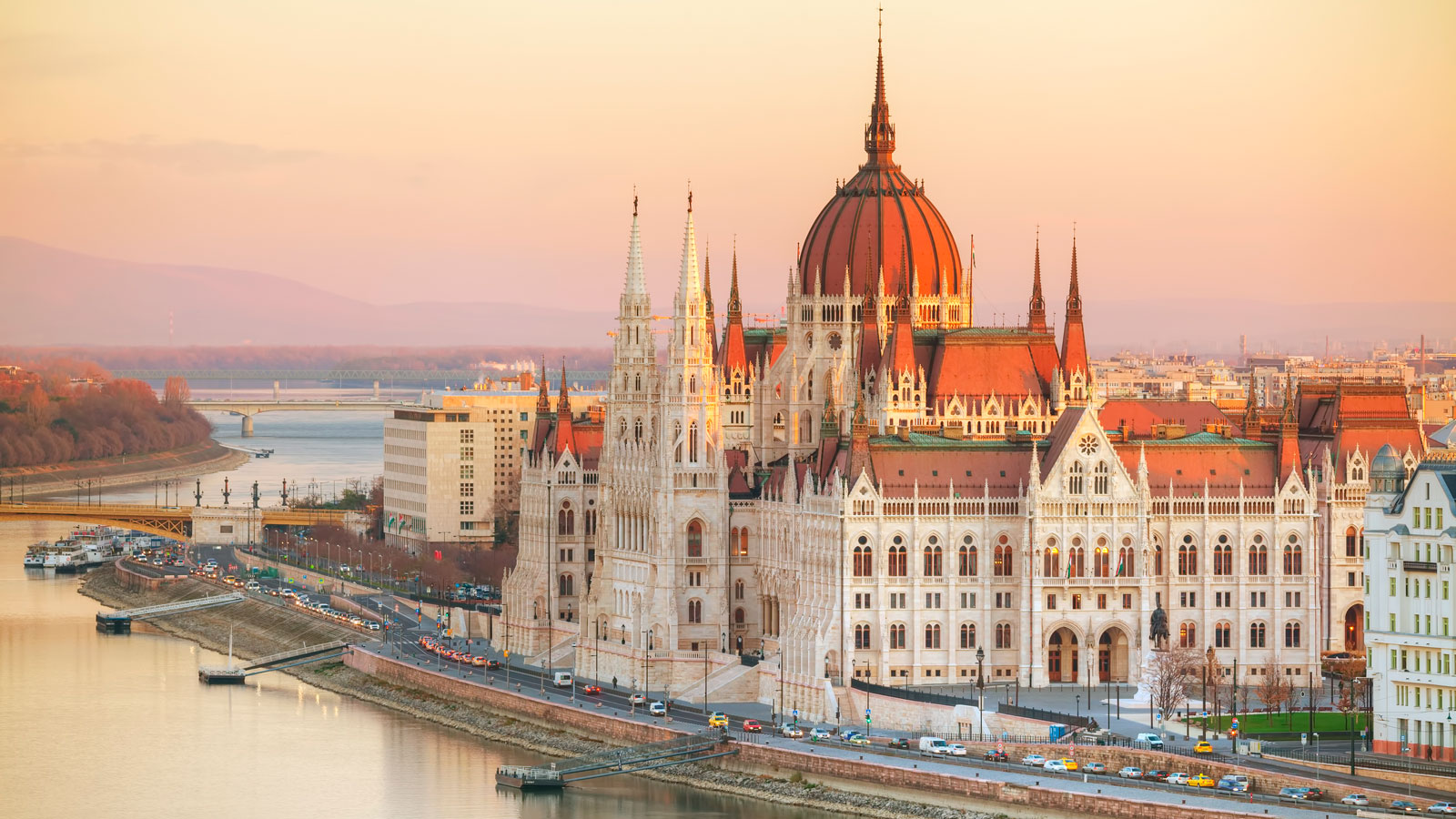
Citation (1)

Citation (4)

Hungary is a small, landlocked country in central Europe. Budapest is its capital and largest city and the center of its culture and industry. Most of eastern Hungary is nearly flat, but the western part has hills and low mountains. The country's chief natural resources include fertile soil and a favorable climate for farming. Magyar (also called Hungarian) is Hungary's official language and is spoken throughout the country. Members of minority groups use their own language among themselves. In parts of Hungary, the people speak various dialects (local forms) of Magyar. About one-half of Hungary's people are Roman Catholics. Much of the rest of the population is Protestant. The Reformed (Calvinist) Church and the Lutheran Church are the largest Protestant groups. Other religious groups include Greek Catholics, Jews, and Unitarians. Hungary has a one-house parliament, called the National Assembly. Voters elect the parliament's members to four-year terms. The Assembly formally enacts all laws.
Citation (2 and 3)
"According to the definition of Kodály and Bartók, Hungarian folk music is the unwritten music surviving in the peasant tradition. It is generally distinguished from those melodies created in the 19th century (mainly in the second half of the century) by middle-class amateur composers which also spread largely in unwritten form: in contemporary collections these songs were also called folksongs. The modern specialist term for them is népies dal (‘song in the folk style’), though they are also known as nóta (popular melody) or magyar nóta (Hungarian melody). As Gypsy bands led the way in popularizing them, they are also referred to as cigányzene (Gypsy music). The musical aspect of Hungary’s working-class folklore – apart from its obvious international connections – is related partly to the folk tradition and partly to popular art song.
Bartók distinguished two main styles of Hungarian folksong, the ‘old’ (‘class A’) and the ‘new’ (‘class B’). However, according to Bartók’s statistics, these two types comprise barely 40% of the corpus of songs. The most distinctive features of the ‘old style’ are the anhemitonic pentatonic scale and a descending melodic structure, in which the second half of the melody is a transposition (if not always exact) of the first, a 5th lower.
Similarities with Gregorian chant are found in the ‘old style’ which may stem from an earlier common source. The roots of folk hymns also lead back in part to Gregorian chant. The folk hymn, which has not yet been adequately investigated, basically followed the same path of development as the folksong: if the texts of the hymns were to some extent laid down by ecclesiastical practice, their melodies varied considerably, intermingling with secular tunes over the centuries and repeatedly coming under new influences. In this way not only did a specific Hungarian repertory evolve, but (as with secular folk music) distinct regional dialects developed within it."
Citation (5)
(1): https://www.cnn.com/travel/destinations/hungary
(2): Image Citation: Country Flag (Hungary), in Europa World online. London, Routledge. University of Tennessee, Knoxville. Retrieved 27 August 2020 from http://www.europaworld.com/entry/hu.FLAG
(3): Text Citation: Country Profile (Hungary), in Europa World online. London, Routledge. University of Tennessee, Knoxville. Retrieved 08 October 2020 from http://www.europaworld.com/entry/hu.is.1
(4): Country Map (Hungary), in Europa World online. London, Routledge. University of Tennessee, Knoxville. Retrieved 27 August 2020 from http://www.europaworld.com/entry/hu.MAP
(5): Szendrei, Janka, Dezső Legány, János Kárpáti, Melinda Berlász, Péter Halász, Bálint Sárosi, and Irén Kertész Wilkinson. "Hungary." Grove Music Online. 2001; Accessed 5 Oct. 2020. https://www.oxfordmusiconline.com/grovemusic/view/10.1093/gmo/9781561592630.001.0001/omo-9781561592630-e-0000013562.